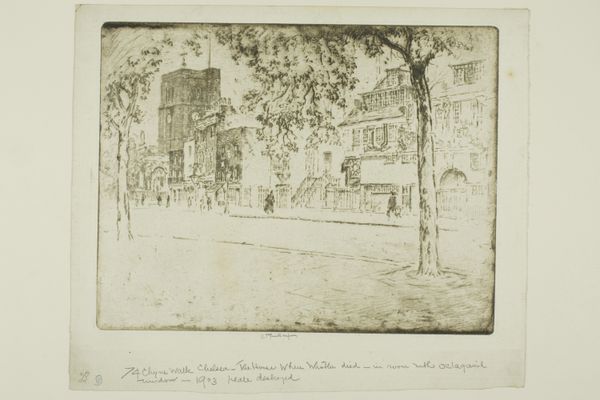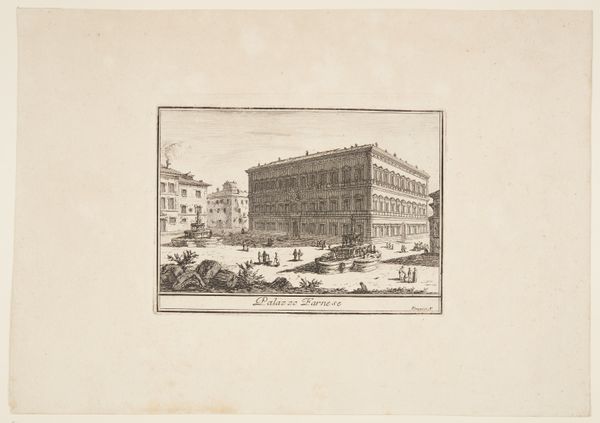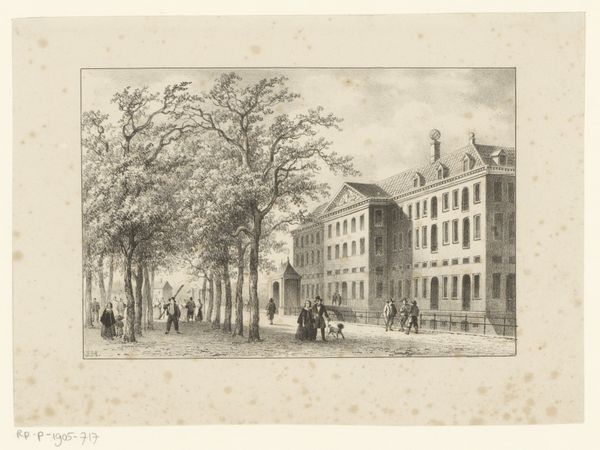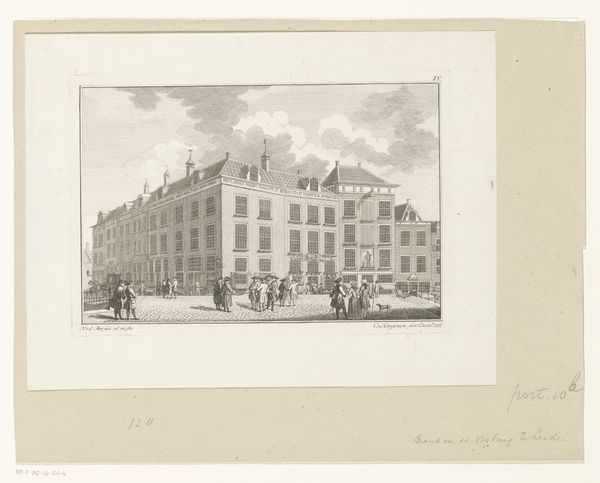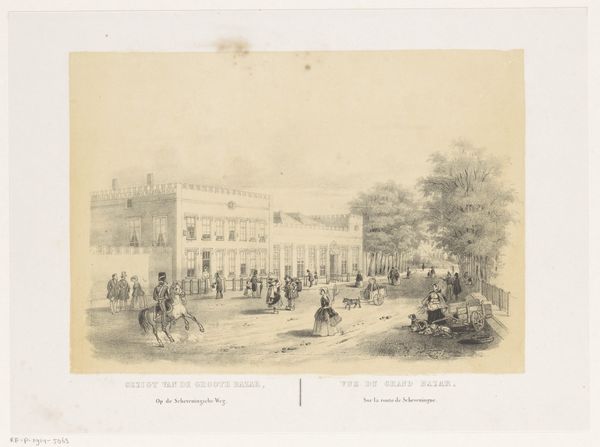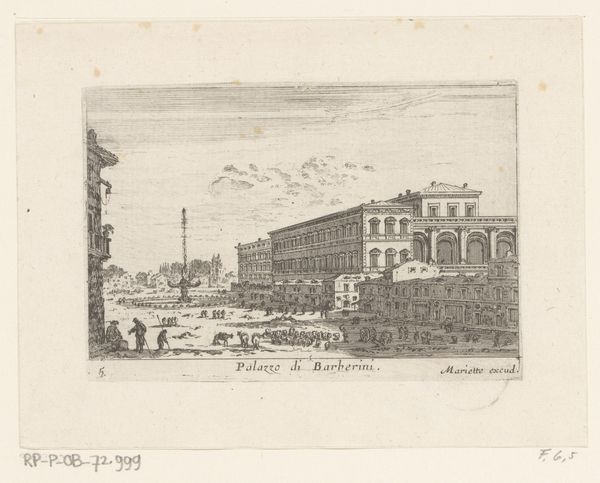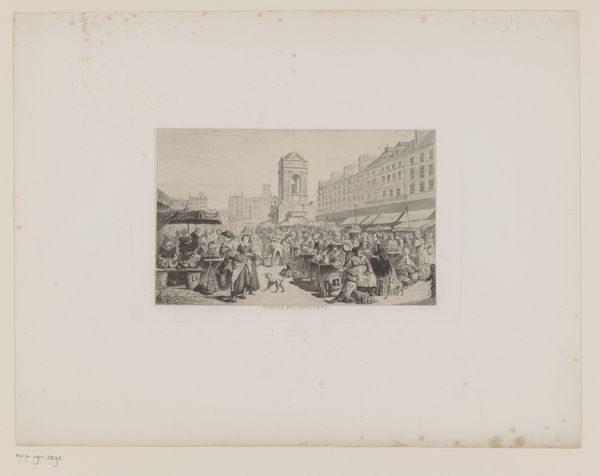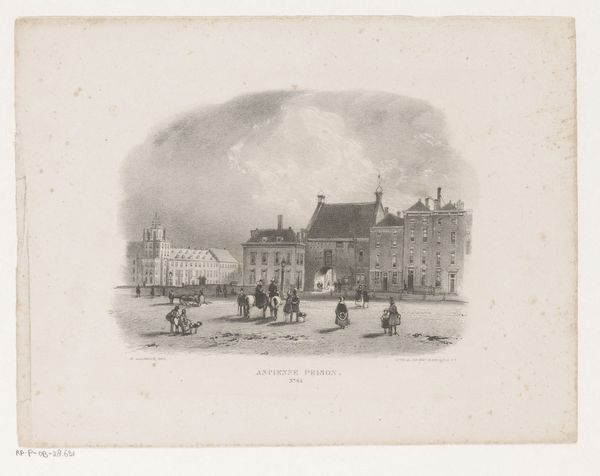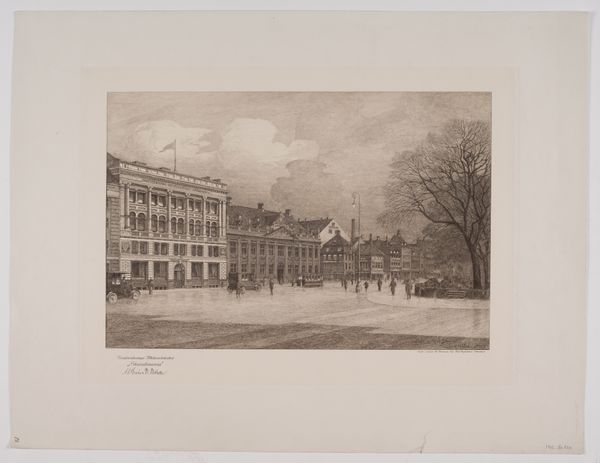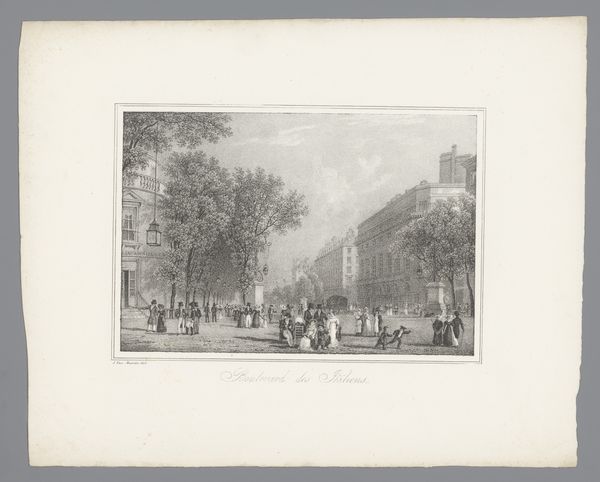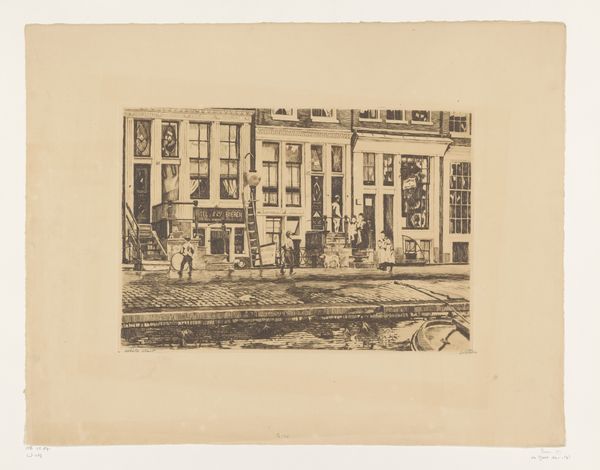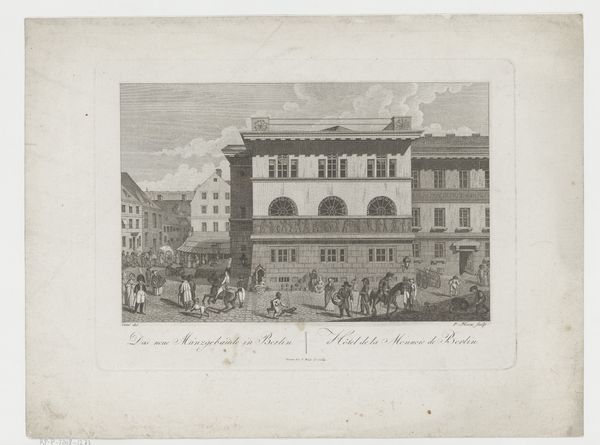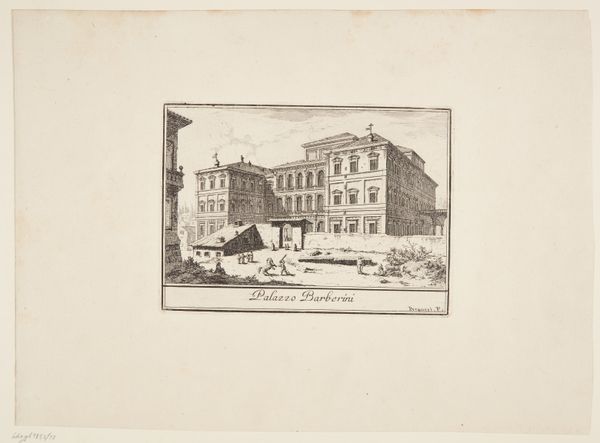
The Horse Guards, plate four from the London Set 1899
0:00
0:00
drawing, print, etching, paper
#
drawing
# print
#
etching
#
etching
#
paper
#
cityscape
#
realism
Dimensions: 115 × 125 mm (image/plate); 140 × 150 mm (sheet)
Copyright: Public Domain
Curator: Let’s consider David Young Cameron’s etching, “The Horse Guards, plate four from the London Set,” created in 1899. Currently it resides here at The Art Institute of Chicago. Editor: It possesses a rather melancholic mood, wouldn’t you say? The light is even, diffused… it almost seems to absorb the architectural detail. It gives the scene a hushed, reverential atmosphere. Curator: The etching itself utilizes a complex network of fine lines to define forms and establish a spatial hierarchy, drawing the eye toward the architectural structures. The linear work serves to define the boundaries between form and void, delineating shadow, depth, and volume, and consequently offering a perspective on London. Editor: From a production standpoint, think of the labor, the repetition, the layering of acid baths to achieve that depth! Consider how it echoes the precision of the Horse Guards themselves. It’s all tied together by the social fabric, really. One questions the level of access to this space for Cameron as it directly represents systems of power within this setting, and thus who can participate and who remains outside the perimeter. Curator: Absolutely, and in this, the semiotic relationship of form mirrors function; for me, Cameron masterfully conveys a sense of depth. We are able to view the Horse Guards parade ground which is nestled amid London's architectural monuments, each defined through varying degrees of etching that allows a sense of atmospheric perspective. It offers us as the viewers an immersive understanding of a real time in a specific space and society, while remaining true to the function of the form within the space. Editor: And, thinking about his use of materials – the metal plate, the paper, the inks... each carrying its own history and industrial baggage. It is, in the most basic of understandings, about how an artwork exists from a simple concept into its truest, final form. These social relationships affect the materiality of both artwork, artist, and viewer within the context of shared space. Curator: The strategic interplay of light and shadow that we see enhances the monumental aspect of the scene, drawing viewers into an interplay between physical structure and ephemeral atmosphere, reflecting Cameron's adept command over tonal values and suggesting a profound sense of history and narrative encased within a structured composition. Editor: Overall, by studying the production and use of these works, we can deepen our understanding of art’s social, political, and economic meanings at the turn of the century and today. Curator: A perspective from which to look through to view society reflected through material engagement.
Comments
No comments
Be the first to comment and join the conversation on the ultimate creative platform.
